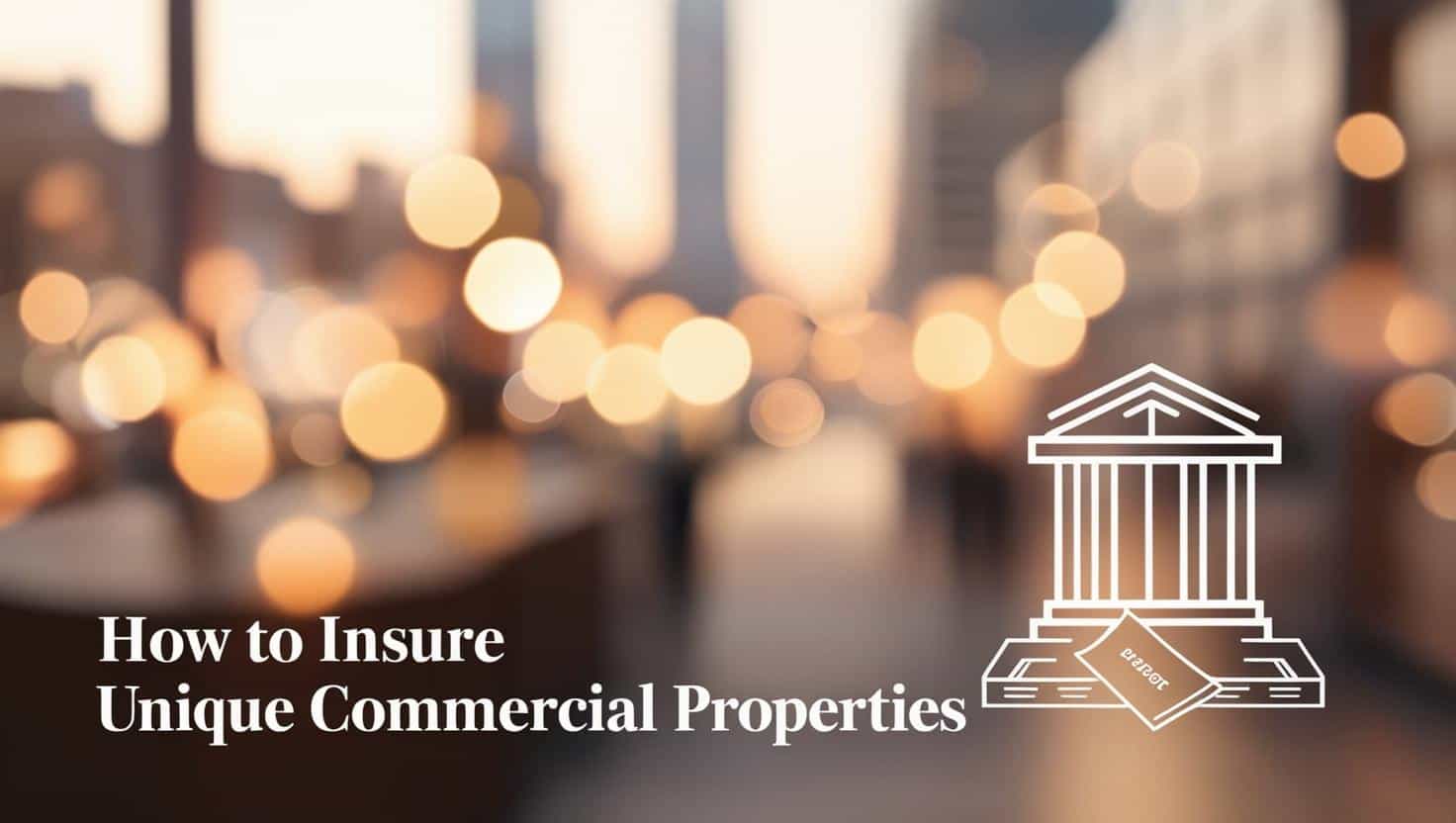How to Insure Unique Commercial Properties

Owning a unique commercial property in Australia comes with exciting opportunities, but it also presents unique challenges—especially when it comes to insurance. Standard commercial property insurance may not offer sufficient coverage for non-traditional properties, leaving business owners exposed to risks. Whether you own a heritage-listed building, an eco-friendly workspace, or a high-risk manufacturing facility, having the right unique property insurance is crucial. Not all commercial properties fit the traditional mold. Some buildings have historical significance, others house high-tech operations, and some are in remote locations. Unique properties often require specialty coverage to protect against risks that standard policies might not cover. Strict government regulations on restoration and repairs. Higher repair costs due to specialised materials and craftsmanship. In 2023, over 13,000 buildings in Australia were listed under heritage protection laws. Use of unconventional materials that require special coverage. Unique risks associated with solar panels, rainwater harvesting, and energy-efficient systems. Australia ranks among the top 10 countries in green building projects. Properties that combine residential, retail, and office spaces. Higher complexity in liability and risk assessment. Need for policies that cover multiple uses under one plan. Increased fire, chemical spill, and machinery breakdown risks. Need for tailored specialty coverage due to hazardous operations. Manufacturing accounts for approximately 6% of Australia’s GDP, highlighting the need for strong risk management. Difficult access for emergency services in case of fire or flood. Limited infrastructure and greater exposure to natural disasters. In 2022, over 65% of insured natural disaster claims in Australia were for rural properties. Expensive custom fittings and imported materials require higher coverage limits. Increased risk of theft, vandalism, and cyber threats. In 2023, high-end commercial properties saw a 15% rise in targeted theft cases. Unique properties require detailed assessments to determine accurate coverage. Working with an experienced broker ensures all potential risks are addressed. Many standard commercial property insurance policies exclude heritage restoration, eco-building repairs, or high-risk industrial accidents. Business owners must ensure their policies are tailored to their property type. Standard valuation methods may not account for rare materials, custom designs, or unique locations. Ensuring replacement cost coverage helps avoid financial setbacks in case of damage. Customised policies should include extended downtime coverage due to complex repair or restoration work. Essential for businesses in remote areas where repairs can take longer. Ensures property-specific risks are fully covered. Includes specialised endorsements for non-standard buildings. Protects business owners against claims from third parties. Essential for properties that attract high foot traffic. Covers financial losses from unexpected disruptions. Can be extended to include natural disasters, cyberattacks, and mechanical failures. Necessary for smart buildings and high-tech commercial spaces. Cyber-related claims increased by 23% in Australia in 2023. Australia experiences frequent bushfires, floods, and storms—especially in rural and coastal areas. Coverage should include structural damage, loss of income, and emergency repairs. Some properties require additional coverage for unique risks, such as equipment breakdown insurance or environmental liability. Heritage and custom-built properties often have fluctuating valuations. Replacement costs may be higher than the market value. Some insurers do not offer unique property insurance due to high risks. Working with a broker ensures access to the right coverage options. Specialised properties often attract higher insurance costs. Implementing safety measures can help reduce premiums. Custom repairs, heritage approvals, or remote locations can delay claims processing. Working with an insurer experienced in specialty coverage can streamline the process. Look for providers with a track record in insuring non-standard commercial properties. Read reviews and ask for case studies. Brokers have access to multiple insurers and can negotiate better coverage. They can identify gaps in standard policies and recommend suitable add-ons. Get multiple quotes and compare the level of coverage, exclusions, and premiums. Always consider long-term benefits over just the cost. Conduct regular safety audits and fire risk assessments. Upgrade security systems to reduce theft and vandalism risks. Installing modern fire suppression systems and alarm monitoring can lower premiums. Some insurers offer discounts for properties with enhanced security. Combining multiple policies under one insurer can lead to lower overall costs. Some brokers offer tailored packages for unique property owners. Immediate reporting of damage to the insurer. Providing detailed documentation and photos. Engaging professional loss assessors if needed. Ensure the insurer assigns an adjuster experienced in non-standard claims. Seek second opinions if the initial settlement seems inadequate. Work with legal or professional advisors if disputes arise. Mediation services can help resolve disagreements with insurers. Insuring a unique commercial property requires careful consideration and specialty coverage that standard policies may not provide. Whether you own a heritage site, an eco-friendly building, or a high-risk industrial facility, working with an experienced broker ensures you get the right commercial property insurance. Protecting your investment means understanding your risks, choosing the right insurer, and staying prepared for unexpected events.Understanding Unique Commercial Properties
Common Types of Unique Commercial Properties
Heritage-Listed Buildings
Eco-Friendly and Sustainable Buildings
Mixed-Use Developments
High-Risk Industrial and Manufacturing Facilities
Remote or Rural Commercial Properties
Luxury and High-Value Properties
Key Insurance Considerations for Unique Properties
Specialised Risk Assessments
Coverage Limitations in Standard Policies
Importance of Replacement Cost Valuation
Business Interruption Coverage for Unique Properties
Essential Insurance Coverages for Unique Commercial Properties
Customised Commercial Property Insurance
Public Liability Insurance for Unique Risks
Business Interruption Insurance
Cyber Insurance for Digitally Connected Properties
Natural Disaster Insurance
Special Endorsements and Policy Add-Ons
Challenges in Insuring Unique Commercial Properties
Difficulty in Determining Property Value
Limited Availability of Insurers Covering Non-Standard Properties
Higher Premiums Due to Increased Risk Factors
Complex Claims Process for Unique Property Damages
How to Choose the Right Insurance Provider
Evaluating Insurers with Expertise in Unique Property Coverage
Importance of Working with an Experienced Insurance Broker
Comparing Policies and Premium Costs
Tips to Reduce Insurance Costs
Implementing Risk Management Strategies
Upgrading Safety and Security Features
Bundling Insurance Policies for Cost Savings
The Claims Process for Unique Commercial Properties
Steps to Filing a Claim for a Non-Standard Property
Working with Claims Adjusters Familiar with Unique Properties
Resolving Disputes in Complex Insurance Claims
Conclusion

